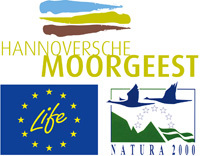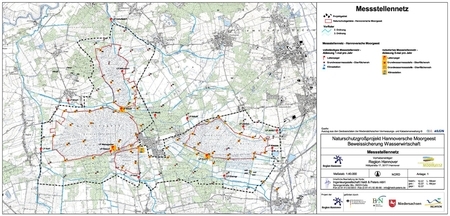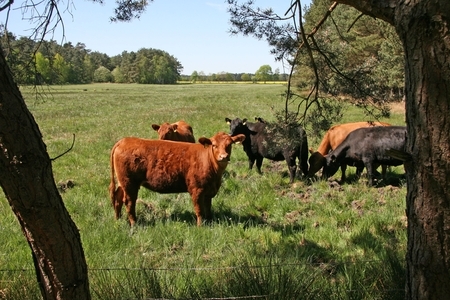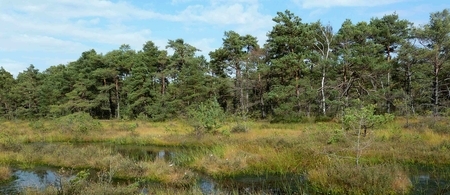
Monitoring
Most biotic factors were exhaustively recorded in the course of drawing up the management and development plan, prior to the beginning of the project. This included, for example, the biotope and habitat types, as well as registration of dragonflies, reptiles, butterflies and moths. There are plans to set up permanent observation sites (for vegetation-related aspects), transects (for birds, for instance) and test areas (such as for butterflies) for individual monitoring purposes. Given the duration of the project and the implementation of the measures towards the project’s end, it will not yet be possible to document many changes within the project period. This is to be funded from other financial sources after completion of the project and described in more detail in the After LIFE Conservation Plan. Nevertheless, the effects of the measures are already being continuously examined since the measures were first initiated.
Efficiency review of water levels and securing of data
Groundwater wells and water gauges were installed and put into operation in the project area as early as the start of the preceding project. They serve to document the water hydrographs with regard to the striven-for re-wetting of the bogs and their fringes, as well as to secure data for sites outside the project area. Evaluation of the water gauge data is designed to document that higher water levels on the bogs do not adversely affect adjacent land and legitimate uses outside the project area. The gauging will take place continuously until the project is completed and be financed from project funds, but presumably will need to be extended beyond that time. Over 120 gauging points and one climatological station are being operated at the present time.
A socio-economic study on the presumed effects the project will have on the local economy and population is available for the project area. The findings of the study are to be reviewed in the last year of the project on the basis of the project measures actually implemented, and then updated. The focus will be on the effects had on agriculture and forestry, recreation and tourism, as well as on civic engagement and voluntary work. The analysis will be prepared by external experts. The findings will be described and assessed on the basis of interviews and gathered data. The analysis is intended to illustrate what socio-economic effects the project will have. This is designed to help promote acceptance and demonstrate effective use of budget funds.
Analysis of effects on ecosystem functions
The effects the project will have on the restoration of the ecosystem functions and services in the project area are to be compiled, updated as a model approach in some cases, calculated and assessed on the basis of available data and results from other expert reports and plans. The effects of the project on the following ecosystem functions and/or services will be considered:
- hydrologic balance (water storage)
- climate protection (carbon storage)
- nutrient balance (e.g. storage of nitrogen and phosphates)
- soil conservation
- habitat function for fauna and flora species and their biotic communities
- process protection (wilderness areas, dynamic development)
The analysis will be prepared in the last year of the project by external experts in cooperation with the project manager(s). The analysis is intended to demonstrate to what extent the project is helping to secure the ecosystem functions and provides ecosystem services for society. This will help to promote acceptance and demonstrate effective use of budget funds.

Artikel-Informationen
Ansprechpartner/in:
Susanne Brosch
Nds. Landesbetrieb für Wasserwirtschaft, Küsten- und Naturschutz
Betriebsstelle Hannover-Hildesheim
- Projektleitung Life+ Moorgeest
Göttinger Chaussee 76 A
D-30453 Hannover
Tel: +49 (0)511 / 3034-3115





